If you’re confused about what is a blog, what kind of blogs exist, and how blogs can be successful, you’ve come to the right place.
A blog is a platform for expressing yourself, connecting with others, and building a following around your unique voice and perspective.
But it can also be so much more than that. A blog can also be a full-fledged business that generates you income, if that’s what you want it to be.
Key characteristics of a blog:
- Blogs consist of discrete, informal diary-style text entries (posts) typically displayed in reverse chronological order, with the most recent post appearing first.
- Blog posts can cover a wide range of topics, such as personal interests, hobbies, professional insights, news commentary, travel experiences, product reviews, and more.
- Blogs allow for interaction and engagement, as readers can leave comments and participate in discussions on individual posts.
- Blogs can be personal online diaries or journals, or they can serve as platforms for businesses, organizations, or individuals to share information and establish authority in their niche.
- Blogs can be focused on a specific topic or niche (e.g., fashion, technology, travel) or cover a variety of subjects.
- Blogs often incorporate multimedia elements such as images, videos, and links to other websites or resources related to the topic.
I didn’t fully understand what blogging was when I first started and I think if I had, I would have found success faster. It wasn’t until I got deeper down the rabbit hole of writing articles while trying to earn some money that I learned more about what is a blog and what it really means to own one.

First, let’s start with the basics: What is a blog?
What is a Blog? Blog Definition and Uses
A blog is a type of website or online platform where individuals, businesses, or organizations can share written content, opinions, experiences, and insights on various topics.
Blogs are essentially online journals or diaries that are regularly updated with new posts or entries, typically displayed in reverse chronological order, with the most recent post appearing first.

Blogs have a variety of purposes, including:
- Provide helpful, entertaining, or relevant content to an audience
- Build an online business that sells information or products
- Brand awareness for companies and other businesses
This blog you are reading right now exists to both provide information and educate our audience as well as to sell our online courses. We run this blog as a full-time business.

This makes me a blogger, which is someone who writes for a blog.
Blogs are also super easy to set up and maintain, too. With user-friendly platforms like WordPress, Blogger, and Tumblr, anyone can become a blogger and start sharing their voice with the world.
History of Blogging
The origins of blogging can be traced back to the early days of the Internet in the 1990s. Back then, blogs were mostly personal diaries where people would rant about their day or share random musings.
These early blogs were often referred to as “weblogs” and were typically hosted on simple, text-based websites.
As the web evolved, so did the world of blogging. By the early 2000s, platforms like Blogger and WordPress made it easier than ever for anyone to create and publish their own blog.
This led to an explosion of new blogs covering just about every topic imaginable, from niche hobbies to global news and everything in between.
How Blogging Has Changed
Over the years, blogs have become a powerful tool for individuals and businesses to share their voice and expertise with the world.
One of the biggest changes has been the rise of social media. Blogs aren’t just about writing blog posts anymore.
Platforms like Twitter, Facebook, Instagram, TikTok, and YouTube have made it easier than ever for bloggers to create different types of content and promote it to their audience.
Many bloggers now incorporate social media into their overall blog content strategy, using it to tease new posts, engage with their audience, and even drive traffic back to their blog.
Another major shift has been the increasing use of artificial intelligence (AI) in the blogging world. AI-powered tools can now help bloggers with everything from content ideation and writing to search engine optimization (SEO) and social media scheduling.
The result is less time writing and more time creating social and supportive content for the blog.
Current Blogging Statistics
Here are some of the latest and most relevant statistics about the state of blogging:
- 600 million blogs are estimated to be on the internet, with over 6 million new posts published every day.
- 22% of bloggers post every single week.
- 60 million blogs are hosted on WordPress, which powers over 43% of all websites.
- 70 million new blog posts are published on WordPress.com every month.
- 77 million new comments added to WordPress posts per month.
These statistics highlight the continued growth and importance of blogging in our world today. If you haven’t started a blog yet, I want to remind you that there is a space out there for everyone.
Why Should I Start a Blog?
If you’re here wondering what is a blog, you’re probably in the early stages of thinking of starting one yourself. If you still aren’t sure, here is a list of great reasons to get into it:
Starting a blog can be a fantastic way to share your expertise, connect with like-minded individuals, and build a community around your interests. Here are some compelling reasons why you should consider starting a blog:
- Establish Authority: A blog allows you to share your knowledge and expertise, establishing you as an authority in your field.
- Build Community: A blog provides a platform to connect with others who share your interests, fostering a sense of online community and belonging.
- Share Your Story: A blog is a great way to share your personal story, experiences, and insights with others.
- Improve Writing Skills: Writing regularly can help improve your writing skills, clarity, and communication.
- Enhance Professional Profile: A blog can enhance your professional profile, showcasing your expertise and thought leadership.
- Increase Visibility: A blog can increase your visibility online, making it easier for others to find and connect with you.
- Generate Income: A blog can generate income through advertising, sponsored content, and affiliate marketing.
- Personal Growth: Writing and sharing your thoughts can be a therapeutic and fulfilling experience, promoting personal growth and self-reflection.
- Leave a Legacy: A blog can serve as a lasting legacy, allowing you to share your ideas and insights with future generations.
Whether you’re looking to establish authority, build a community, or simply share your story, a blog can be a powerful tool for personal and professional growth.
Many successful authors and thought leaders have used blogs as a powerful platform to share their ideas and build a following before publishing books.
For example, James Clear, author of the bestselling book “Atomic Habits”, built a large email list and audience through his blog, James Clear, years before his book was published.
Similarly, Mark Manson, author of “The Subtle Art of Not Giving a F*ck”, grew his audience through his blog MarkManson.net, which allowed him to successfully launch his book to a built-in readership.

Blogging enabled these authors to test ideas, refine their message, and connect directly with readers, which laid the foundation for their books to become bestsellers.
7 Types of Blogs
Now that we’ve covered the basics of what a blog is and how it’s evolved over time, let’s dive into the different types of blogs that exist.
From a personal blog to business-focused content hub, there’s a type of blog out there for everyone.
Here are seven common types of blogs:
- Personal Blogs: All about sharing your life story, thoughts, and experiences with the world. A personal blog can also be a hobby blog and is not usually monetized.
- Business Blogs: Designed to promote products, services, and expertise. They can help establish a company as an authority in its industry, drive traffic to a website, and even generate leads and sales.
- Niche Blogs: Focus on a specific topic or industry, catering to a targeted audience. They can be incredibly effective at building a loyal following and establishing a brand as an expert in its field.
- News and Current Events Blogs: Report on breaking news and offer commentary and analysis. They can be a great way to stay informed about what’s happening in the world and to engage in discussions about important issues.
- How-to and Tutorial Blogs: Provide step-by-step guides and instructions on a wide range of topics. They can be incredibly helpful for readers looking to learn new skills or solve problems.
- Review Blogs: Critique products, services, books, movies, and more. They can be a great way to help readers make informed decisions and discover new things.
- Lifestyle Blogs: Cover a wide range of topics, from fashion and beauty to travel and food. They can be a great way to connect with like-minded individuals and discover new trends and ideas.
As you can see, there are a lot of different types of blogs that serve a variety of purposes. It’s really up to you to decide what kind you want to start based on where your interests lie.
If you want to make money with a blog, starting with a niche blog on a particular topic that interests you is probably the best place to start flexibly.
This blog that you are reading is an example of a niche blog. Our niche is blogging and online business.
How to Start a Blog
Ready to dive into the world of blogging but not sure where to start? Don’t worry, we’ve got you covered! Here’s a step-by-step guide on how to start your very own blog:
Choose a Blogging Platform
The first step in starting a blog is to choose a blogging platform. Some popular options include:
- WordPress – A powerful, flexible platform that powers over 40% of all websites. Great for beginners and advanced users alike.
- Blogger – A simple, user-friendly platform owned by Google. Perfect for personal blogs and those just starting out.
- Squarespace – An all-in-one platform that makes it easy to create a professional-looking blog with beautiful designs.
- Wix – Another drag-and-drop website builder that offers a range of blogging features and templates.
As I mentioned earlier, WordPress is used by most bloggers. With it, you’ll get access to the widest range of themes and plugins for extra design and customizability.
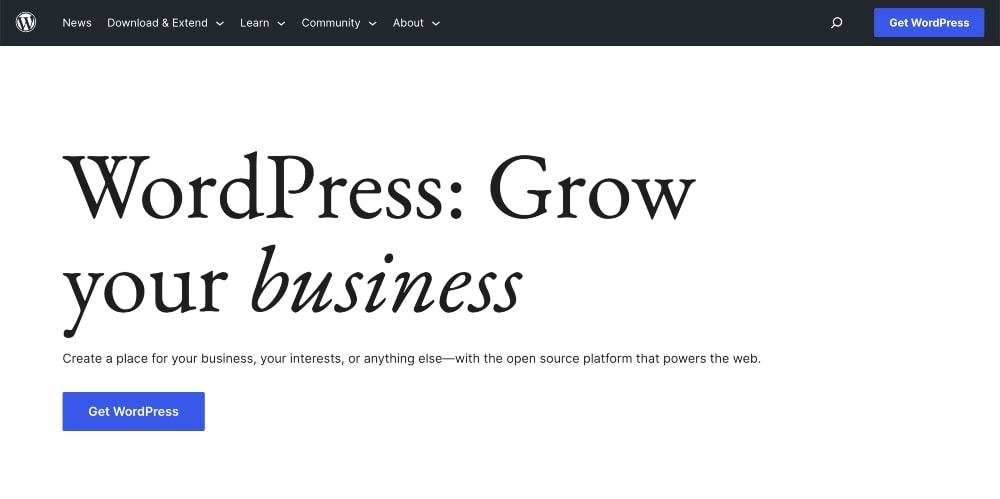
That being said, there are also some non-traditional platforms that you can blog on that have cropped up on recent years:
- LinkedIn allows you to publish long-form posts and articles directly on their platform, tapping into their large professional network.
- Medium is a popular blogging site focused on storytelling and ideas, with a clean interface and built-in audience.
- Substack is a newsletter platform that makes it easy to publish content and monetize it through subscriptions. These alternatives provide different features and audiences compared to self-hosted blogging solutions, allowing you to reach people in new ways.
Pick a Domain Name and Hosting
Next, you’ll need to choose a domain name for your blog. This is the URL that people will use to access your site, like “www.yourblog.com”.
It’s important to choose a name that’s memorable, relevant to your niche, and available as a domain.
If you’re not sure about your name, you can ask ChatGPT or one of my favorites, Claude AI, for some ideas. Alternatively, you can also start your blog first and decide on your name later.
You’ll also need to choose a web hosting provider to store your blog’s files and make it accessible online. Some popular options include:
- Bluehost – A reliable, affordable hosting provider that’s optimized for WordPress blogs.
- Siteground – A comparable hosting company with a range of plans to choose from.
- Hostinger – Another budget-friendly hosting option with easy-to-use tools and features.
Our personal favorite is Bluehost. We’ve hosted several websites with them over the years. They’re one of the most affordable plans to get started with and they have great, 24/7 customer service.
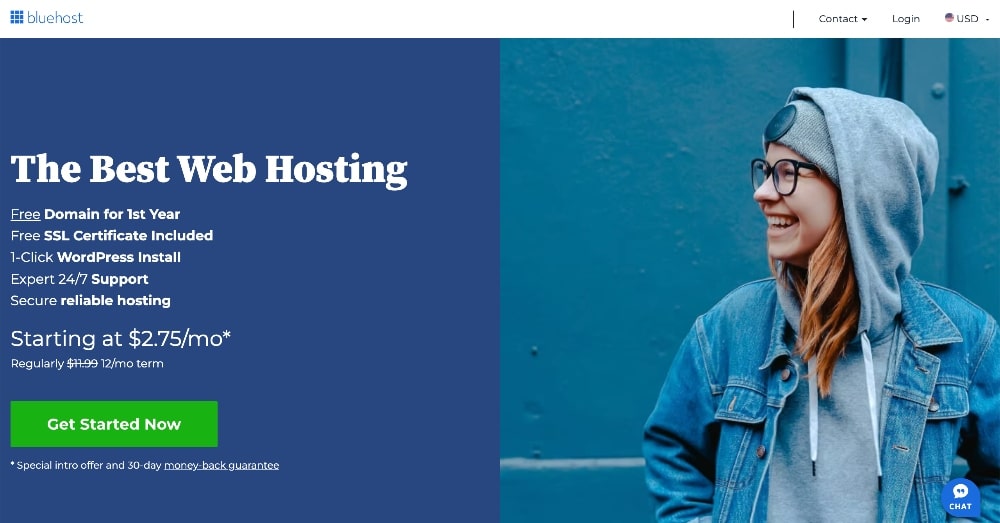
We’ve also partnered with them to get our audience an exclusive discount on hosting that you won’t see on their website. With the discount, you can start a blog for just $1.99/month (paid annually).
Design Your Blog
Once you’ve chosen your platform and hosting, it’s time to design your blog. Most platforms offer a range of free and premium themes to choose from, or you can hire a designer to create a custom look and feel.

Astra and Kadence are two of the best beginner-friendly WordPress themes that are also free.
Key Pages to Include on a Blog
When setting up a blog, it’s important to include the right key web pages. These pages will help ensure that your content is organized, easily accessible to readers, and that you have an effective way to monetize your blog.
- Home Page – This most essential page should give a brief overview of what your blog is about and draw readers in with compelling visuals and/or headlines. Your navigation bar should also be prominent here and present visitors with easy access to all other areas of the site.
- About Page: Your About page should provide detailed information about yourself and the purpose of your blog. You can also include any details that would help build trust with your audience like professional credentials, testimonials, and any other helpful resources.
- Contact Page: Your visitors should have an easy place to get in touch with you if they need to for questions, business inquiries, and other matters.
- Blog or Archives Page: This page displays the full list of individual posts in reverse chronological order along with categories and tags that make it easier for users to find relevant articles quickly and easily.
- Legal Pages: Your legal pages provide a clear explanation of the terms of use, privacy policy, copyrights, and other important information that visitors need to be aware of before engaging with your content.
When designing your blog, consider factors like:
- Branding – Make sure your design aligns with your brand identity and target audience.
- Readability – Choose a clean, easy-to-read layout with plenty of white space.
- Mobile-friendliness – Ensure your blog looks great on both desktop and mobile devices.
- SEO – Optimize your design for search engines by using clean code and fast-loading images.
You can view our post on blog examples for some inspiration.
Create Content
Finally, it’s time to start creating content for your blog! Develop a content strategy and follow these best practices:
- Define your niche: Identify your target audience and make sure the topics you write about are related to their interests.
- Develop a content calendar: Plan and schedule your posts in advance.
- Create high-quality content: Focus on providing valuable information and insights.
- Write engaging headlines: Craft attention-grabbing titles that entice readers.
- Use visuals: Incorporate images, videos, and infographics to enhance your content.
- Keep it concise: Break up long posts into smaller, easier-to-read sections.
It takes a lot of work to write a new blog post multiple times a week, evening with the AI writing tools that we have on the market today.
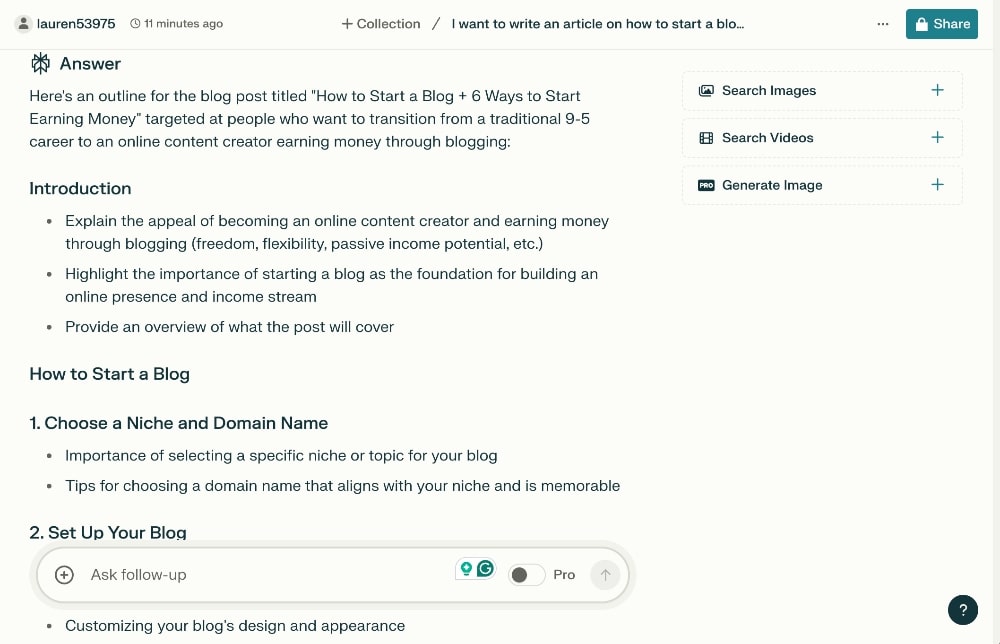
Check out our post on how to write blog posts with AI to learn more how to write more content faster and better with AI.
Promote Your Blog
Once you’ve published your first few posts, it’s time to start promoting your blog.
Share your content on social media, reach out to influencers and other bloggers in your niche, and consider guest posting on other sites to build your audience and authority.
- Social media sharing: Share your posts on social media platforms like Instagram, TikTok, Pinterest, and YouTube.
- Email newsletters: Build an email list and send emails regularly to subscribers with updates and promotions.
- Guest posting: Write guest posts for other blogs to build backlinks and expand your audience.
- Collaborate with influencers: Partner with influencers in your niche to reach new audiences.
- Optimize for SEO: Use keywords, meta descriptions, and other SEO techniques to improve visibility in search engine results.
- Engage with readers: Respond to comments and encourage discussion to build a loyal following.
- Repurpose blog content: Convert posts into other formats like videos, podcasts, or infographics to reach different audiences.
Remember, starting a successful blog takes time, effort, and consistency.
How Do Blogs Make Money?
Another key factor to really understanding how blogging works is to learn how they earn money. Blog owners have to get paid somehow, so let’s explore monetization in more depth here.
In addition to the different types of ways to make money blogging outlined below, know that it’s also quite common for bloggers to take on side hustles or other blogging jobs to supplement their income.
The methods below are not the only ways to make money with a blog but they are by far the most popular and successful.
Ads

Ads are one of the most popular and easiest ways for blogs to make money. Blogs can monetize their websites by displaying ads from third-party ad networks, such as Google Adsense, Mediavine, and Ezoic.
These ad networks will place relevant ads on your blog in return for a share of the revenue generated from each click.
Ads are a great way to make money passively and don’t take much effort, but the downside is that many users find them intrusive and distracting. They make your website look bad and many people use adblockers on their browsers to prevent ads from being displayed anyway.
Ads can still be very effective but the key to earning decent money with ads is to have a lot of traffic.
Affiliate Programs
As mentioned earlier, bloggers can sign up with affiliate networks to promote products or services in exchange for a commission on any sales they generate.
This is a great way to make money blogging without having to take the time to create your own products and services.
Amazon Associates, Clickbank, and Shareasale are two popular affiliate networks for bloggers.

Affiliate marketing is generally the most successful when you create a strategy that focuses on a few, higher-paying affiliate programs or when you have a broader approach but a lot more website traffic.
Popular affiliate-focused articles include software comparisons and reviews, for example:
Sponsored Posts and Content
Other websites generate income through sponsored content, which is essentially just a blog post that you get paid to publish on your website.
Bloggers often partner with brands and organizations to publish content that promotes their products or services.
This kind of blog post is usually paid upfront and can be a great way to make money provided it’s in line with the topics your audience is interested in.
It’s important to disclose any sponsored content so readers know which content has been generated for payment.
In order to make money with sponsored content, you generally have to have a larger audience and a page that displays important metrics about your audience (i.e. Avocadu’s Advertise page).
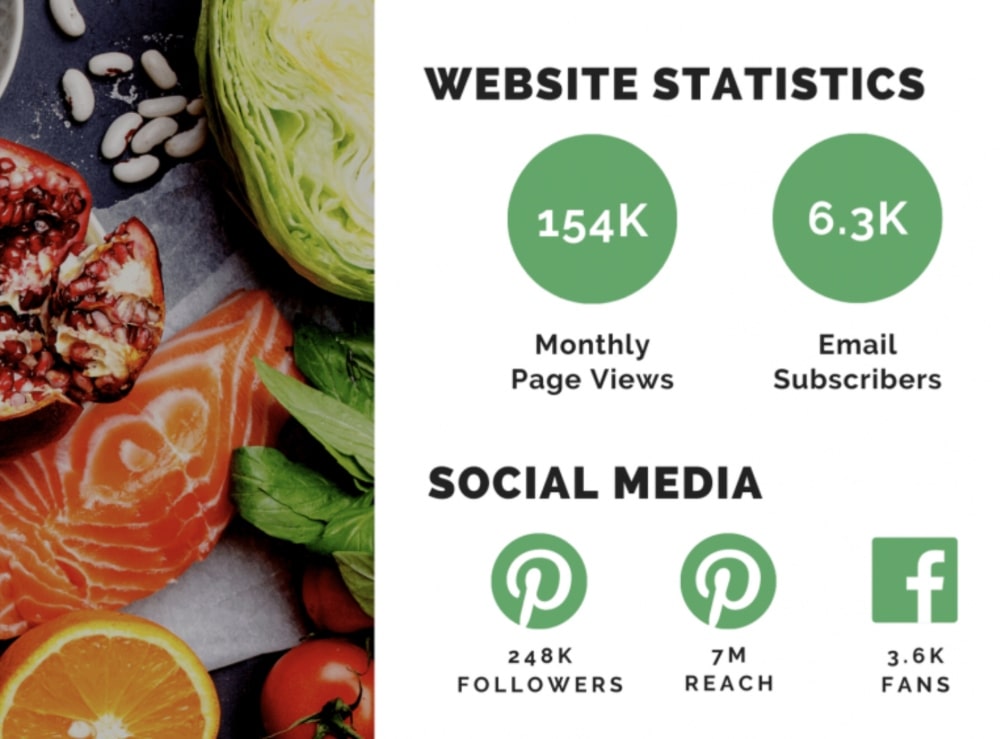
Selling Products and Services
Finally, one of the best ways to earn a significant income is through creating and selling your own products and services.
This can involve digital products such as online courses, eBooks, and coaching or physical products that are usually sold on e-commerce platforms.
There are tons of online learning platforms on the market that will help you put together your product and design beautiful landing pages to help sell it.
Selling on Facebook and Instagram is also pretty popular and can be another way that bloggers share their products, especially with the help of paid advertisements.
What Makes a Blog Successful?
Besides starting out with a good business plan for your blog, the following factors will also play a role in your success.
Consistent, High-Quality Content
One of the most important factors in a successful blog is the consistent production of high-quality, valuable content. This means publishing new posts regularly (at least once a week) and ensuring that each post provides useful information, insights, or entertainment to your readers.
Relatable Content
A successful blog also has an engaging, relatable writing style that connects with the target audience. This could mean using a conversational tone, incorporating personal anecdotes, or injecting humor and personality into the content.
The more people engage with your content, the better it will perform in the social and search algorithms, and the more people will ultimately see it (and continue engaging).
Engaged Audience
A successful blog fosters an engaged, loyal audience that regularly interacts with the content. This means encouraging comments, responding to reader questions and feedback, and building a sense of community around the blog.
This engagement can be on your blog and/or any of your social media channels.
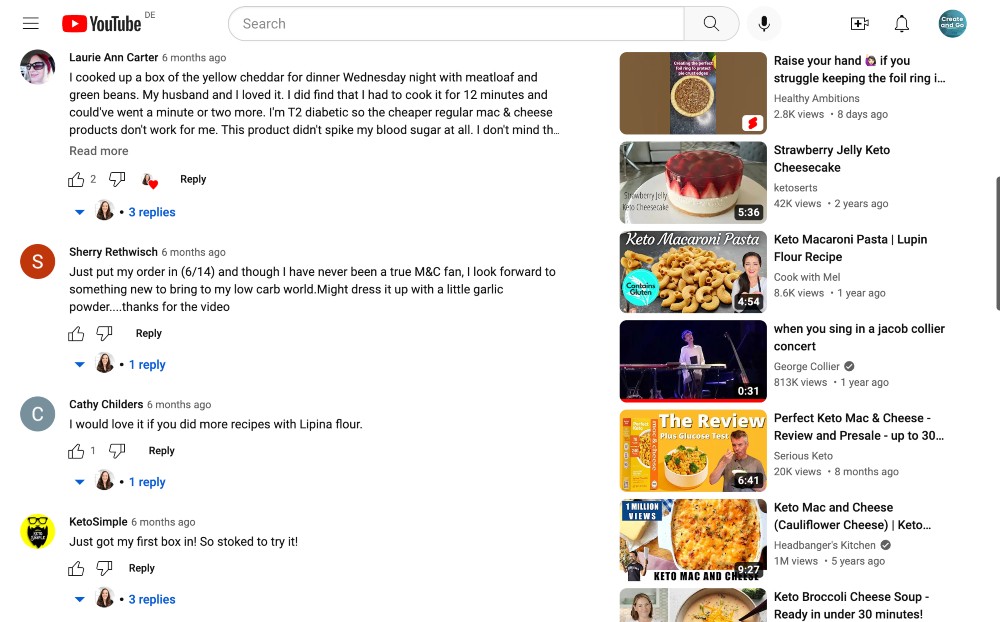
Your audience wants to know that a real person is behind the blog, whether it’s a personal blog or a business blog. There should always be a personal touch and a way to interact.
Targeted Promotion
There are many ways to share content from a blog but successful blogs have a targeted promotion strategy that includes reaching their target audience on the right platforms with the right type of content.
This could be blog posts, videos, or other types of content. Just make sure to match up your content with your target audience.
Diversified Monetization Strategy
We already covered the ways that you can make money with a blog but the key to making more money is to diversify your strategies. This could include advertising, affiliate marketing, sponsored content, or selling digital products or services, or a combination of all of them.
What is a Blog FAQ
Below are some frequently asked questions related to what is a blog.
This was very helpful, thank you! I have bookmarked this page for more detailed investigation and to do the personality quiz later.
I am a fairly good writer and have been contemplating a general information/opinion/observational type blog for some time. Making money doing it would be even better if that’s possible and I suspect the information on your website will be prove invaluable to me as I look to begin.
Hey Melinda! So glad you found this article helpful! If you haven’t done so yet, be sure to sign up for our free eCourse, linked on the homepage 🙂
I think I like this. I am new to it but with your clear informative content, I feel like diving in. I love writing stories, songs, plays and singing. I can do marketing also. T his was a great post. Thanks.
Awesome! Glad you found it helpful!
Excellent information and very informative. I’m new to all of this, but I love to write. I’m also a full-time nursing student, so the added income would be extremely helpful. Great post, thank you.
You are most welcome! Best of luck to you!